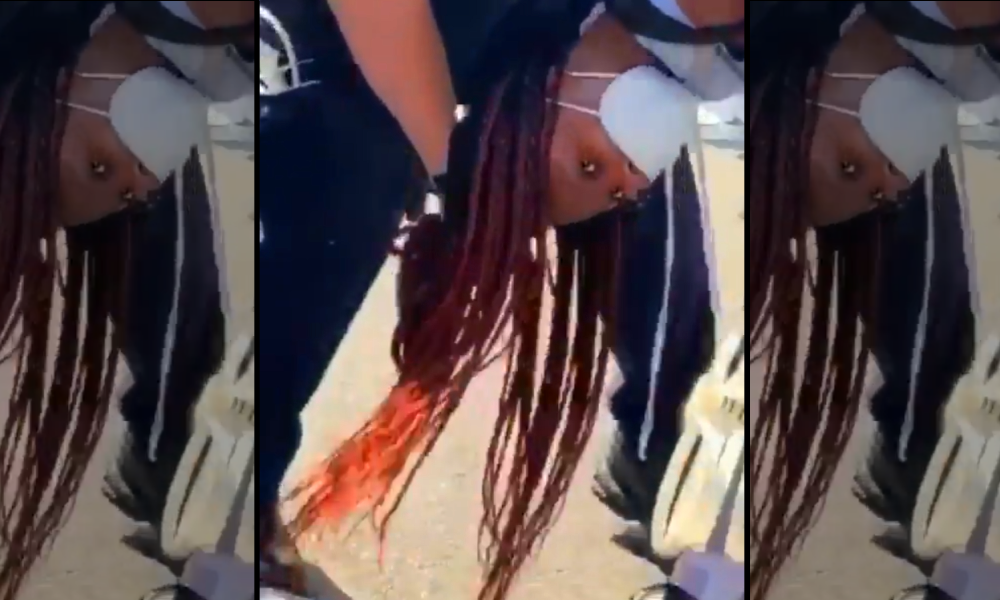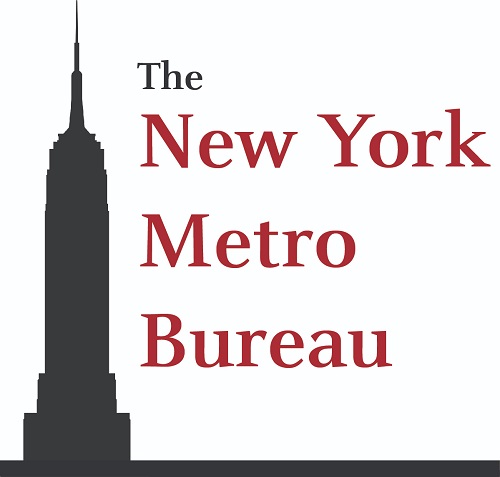
Counter-protestors were carried off by police after they attempted to disrupt a July 15 march across the Brooklyn Bridge.
UPDATE: The image above is from an Instagram video that has been taken down. Below is the updated link to news coverage of the same march.
![]() Watch video here
Watch video here
NEW YORK — As soon as he sat down, 19-year-old Elijah Green knew he was going to be arrested. When he and several others blocked the eastbound lanes of traffic on the Brooklyn Bridge on July 15, they believed they were disrupting a pro-police march.
Uniformed New York Police Department officers with riot helmets quickly mobilized to disperse the small cadre of seated protesters so the march could continue unimpeded.
“I was pushed to the ground by an officer, and I saw several other people who were pepper sprayed and hit with sticks,” Green said after being released from NYPD central booking on a disorderly conduct charge. “The police are the ones who started the fighting.”
Green believed that the march he and others were trying to protest was organized by the Sergeants Benevolent Association (SBA), one of five police unions in New York City. Backed by a number of Black and Latino religious organizations, the protest appeared to be largely in support of officers, though the real organizers say this could not be farther from the truth.
The Black religious leaders who actually organized the march now say their original purpose was to highlight issues like poverty and to call for police reform, and that groups like the SBA and so-called Blue Lives Matter supporters co-opted the demonstration for their own purposes.
The incident highlights the balancing act faced by many reform organizations that would like to include officers and police supporters but often feel that spirit is lost in an increasingly polarized conversation around policing reform.
Tramell Thompson, who leads Progressive Action, a group that helped organize the event with the United Clergy Coalition, believes that the SBA intentionally misled organizers by turning the event into a pro-police march.
“When I got to the march and I saw the number of police, and in particular the Blue Lives Matter flags, I was taken aback,” he said. “The people who support Blue Lives Matter are the gatekeepers of not wanting police reform.”
Was march ‘hijacked’?
Despite having worked with the SBA, in particular their president Ed Mullins, and explained the nature of the march as being neither in support of or against the police, Thompson says the SBA “hijacked” the march after the union posted flyers to their Twitter account announcing a pro-police march across the Brooklyn Bridge with Black clergy and religious leaders.
Thompson says the SBA made no attempt to tell organizers about their flyer. He did not find out about it until a reporter sent him the flyer midway through the march.
“Up until then I had no idea the SBA had put up a flyer of their own,” he said. “It feels like a whole bunch of Black folks are supporting the Blue Lives Matter movement, that’s what I feel like the SBA did.”
The SBA did not respond to a request for comment about either their flyer, or to the allegations that they “hijacked” the march.
Despite Progressive Action and United Clergy Coalition creating their own flyer that clearly outlined their pro-reform platform, many, including Green, only ever saw the SBA version, which made no mention of police reform.
Kimberly McLaurin, also a Progressive Action organizer, says that the pro-police groups not only co-opted the message of the march, but their presence hurt her professional reputation as a community organizer.
“Just for me personally to find out that I was part of a pro-police march, a Blue Lives Matter march, that’s dangerous for me,” said McLaurin, who is based in Harlem. “It’s embarrassing for my family, it's embarrassing for neighbors, and it sets the wrong example, especially being that we’re very entwined in the community.”
Not all the organizers believed that the SBA or Blue Lives Matter activists intentionally co-opted the march, however. Bishop Gerald G. Seabrooks, with the United Clergy Coalition, suggested that the march was simply a miscommunication between the groups.
“I got a chance to speak with some of the protesters myself. They thought that some of the SBA were KKK and white supremacists and they thought that we were marching to hurt them,” Seabrooks said. “I said, I’m black like you, I’m a man of God, why would I want to hurt you.”
Seabrooks pointed to his own religious convictions for why he wanted to include police in the march, as well as including them in conversations on the larger 13-point plan by United Clergy Coalition and Progressive Action to stop violence around the city while also advancing a pro-police reform agenda.
“God instituted government so that we could have law and order in society, and the Scripture declares that police officers are God’s messengers, God’s angels, to enforce law to the lawless,” Seabrooks said, before qualifying this does not mean supporting police brutality.
After the march from Brooklyn over the bridge, a rally was held on Broadway near City Hall in Manhattan. When speakers began to demand police reform and accountability, both McLaurin and Thompson say the SBA and Blue Lives activists abandoned the rally.
“As soon as the pastors began mentioning police brutality and police reform, they left,” McLaurin recalls of both the SBA members and pro-police activists. “They had to have brought at least 300 officers, and at least 250 left.”
Once PBA and Blue Lives supporters left, march organizers say they were able to engage with the anti-police protesters who were previously booing them. They came to an understanding that they all want reform.
“They tried to cause more division in the Black community and luckily the bishops were there to set things straight — they opened the dialogue with the protesters, because they really believed we were there to harm them,” McLaurin said. “These are young kids, so I can’t even imagine them thinking that, and me being a part of that. It kills me. I marched for Black Lives Matter myself.”